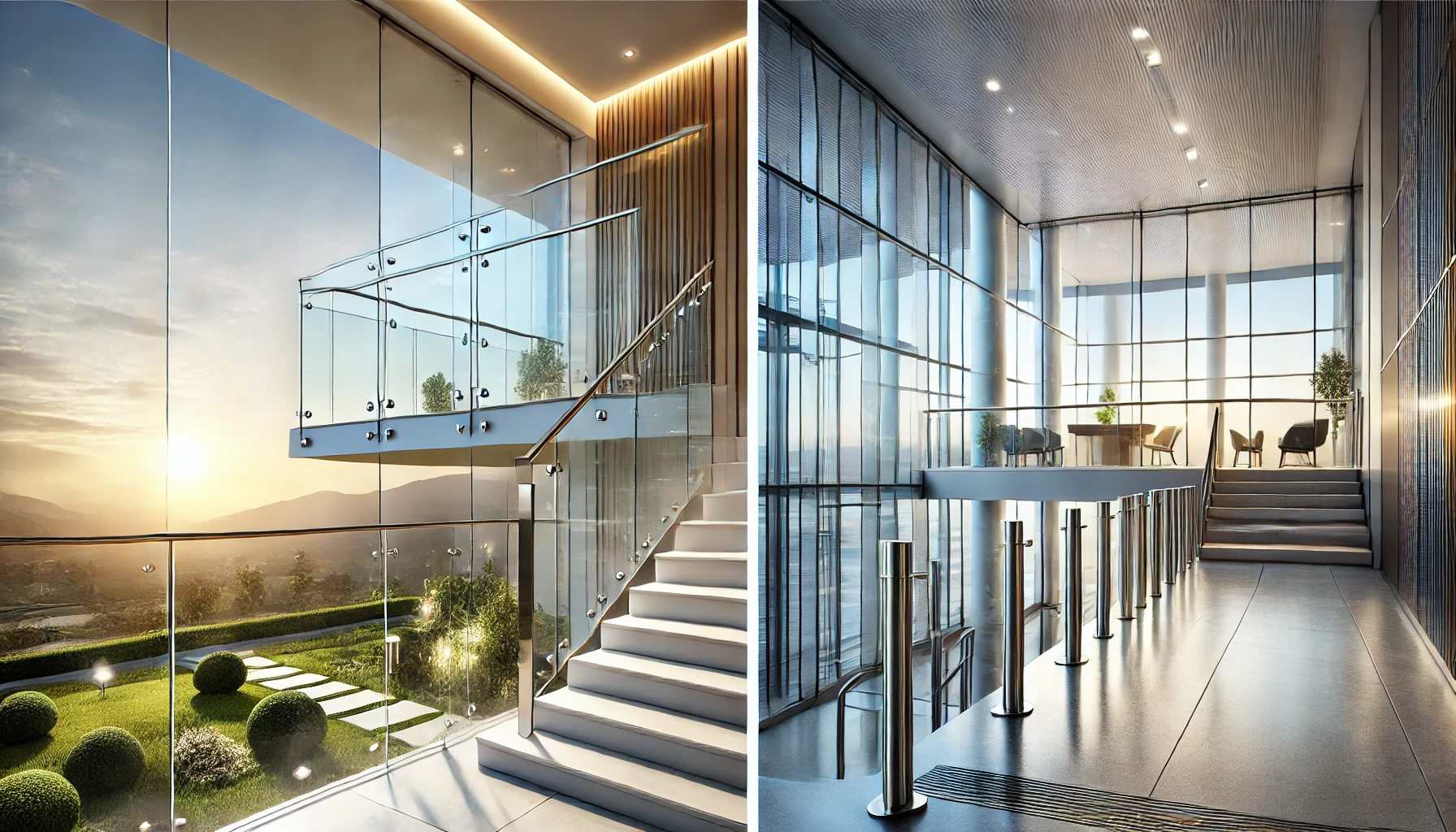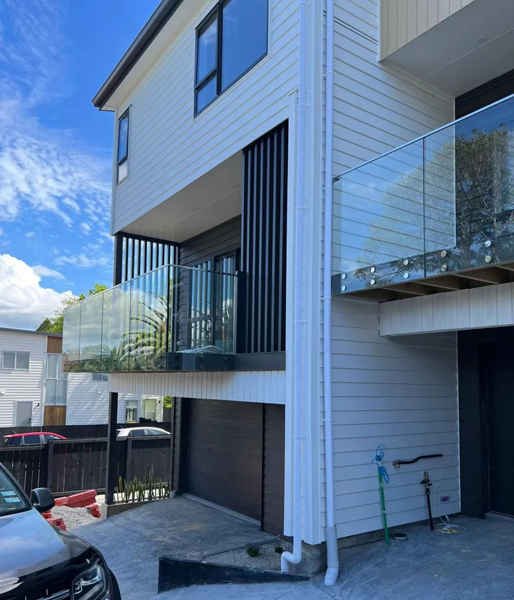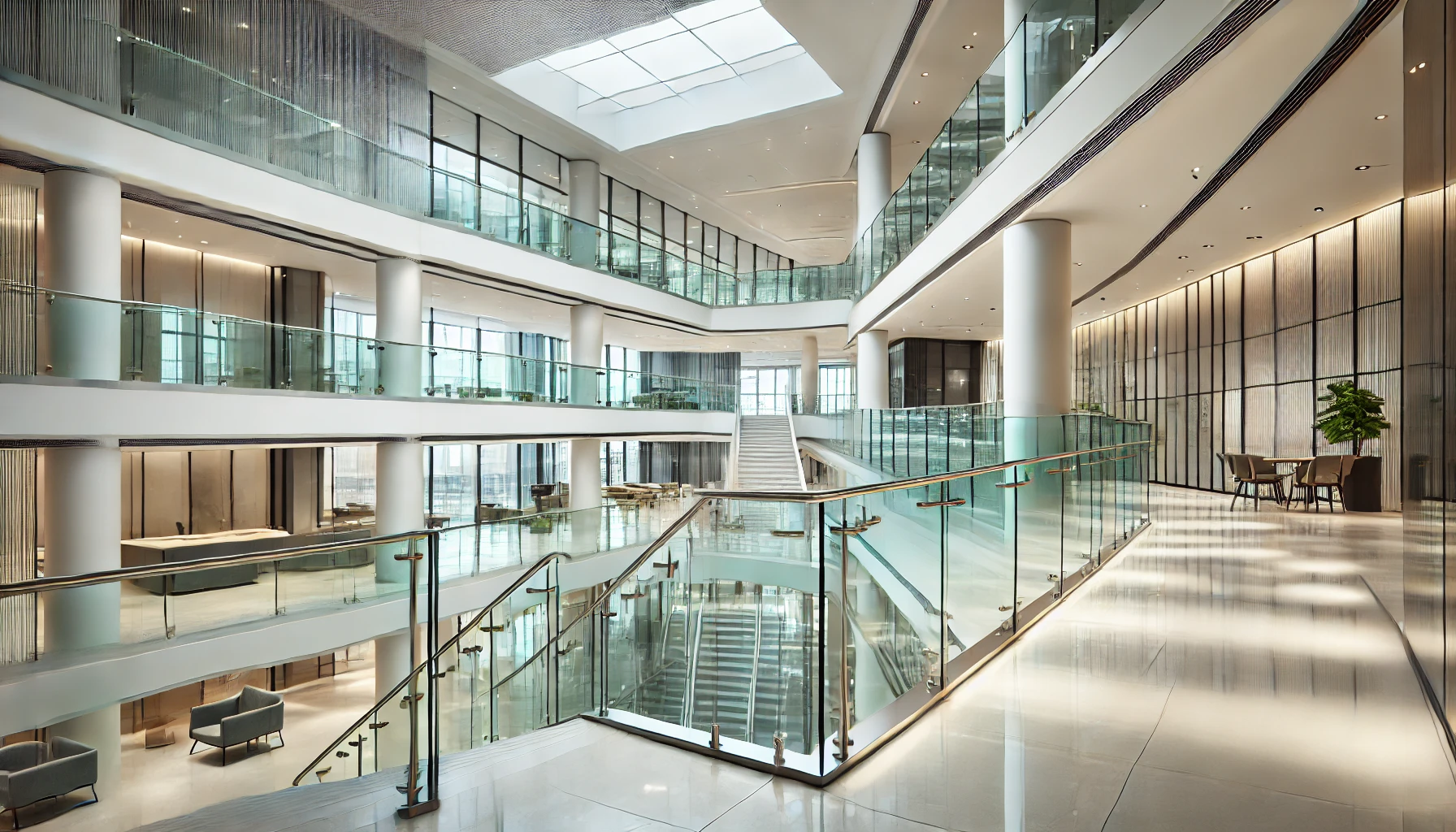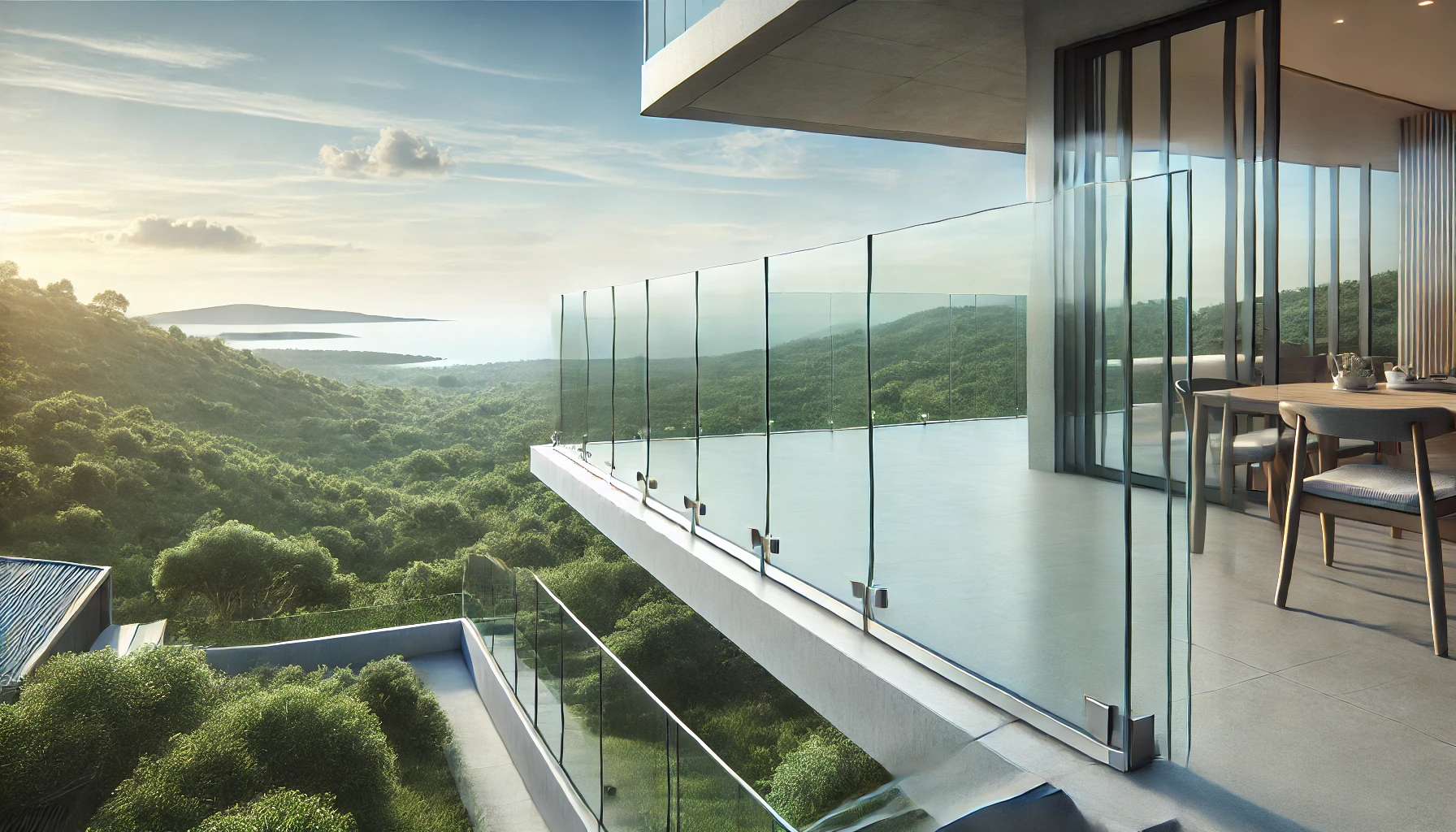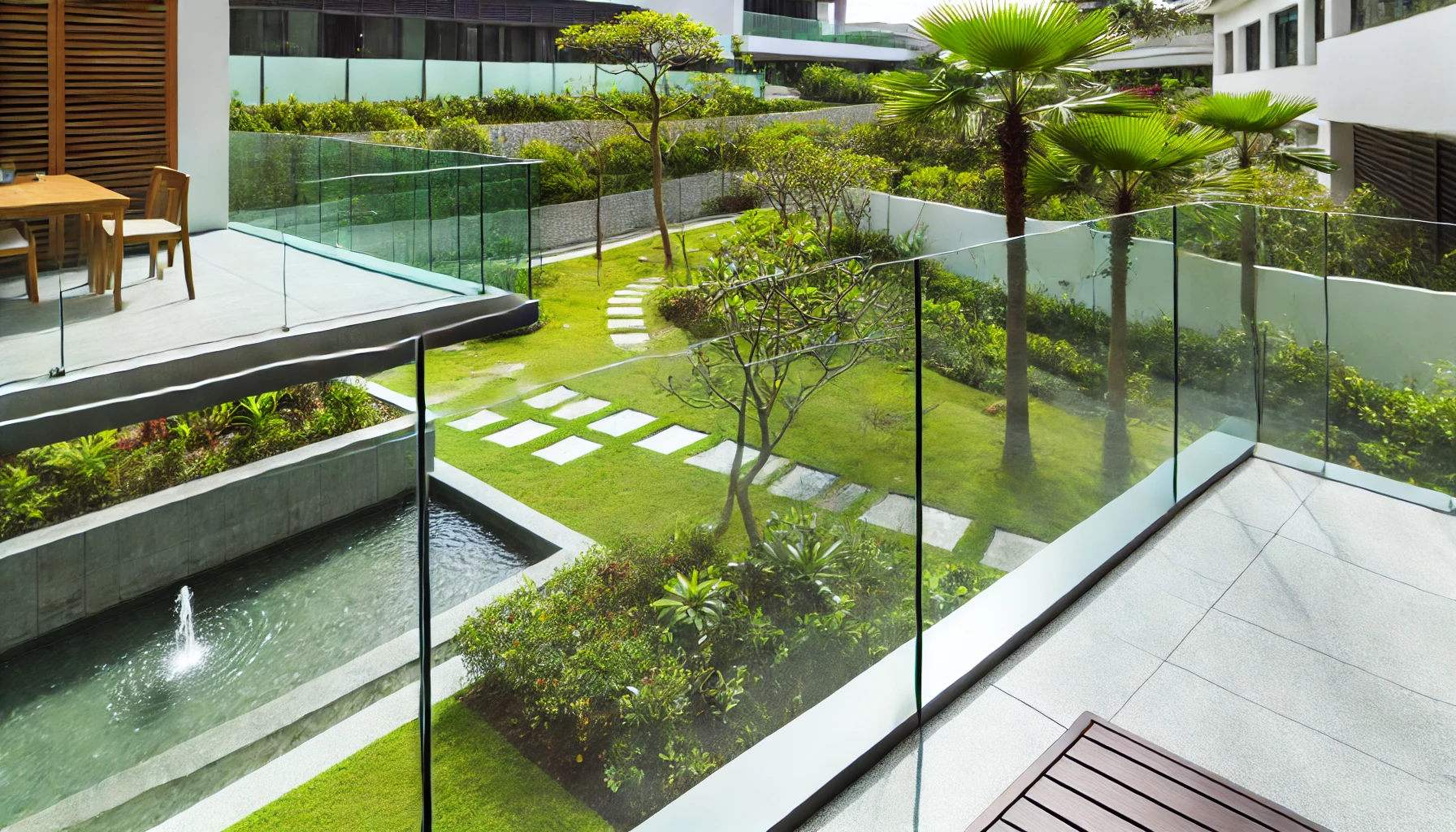Introduction
Glass railings are a popular choice in both residential and commercial settings, prized for their modern look, durability, and ability to create open, airy spaces. However, the criteria for selecting the right glass railings can differ significantly depending on whether they are intended for a home or a commercial building. This article explores the key considerations in choosing glass railings for residential and commercial use, focusing on how to balance functionality with aesthetics to achieve the best results for each environment.
1. Understanding the Different Needs of Residential and Commercial Spaces
The first step in selecting the right glass railings is understanding the distinct requirements of residential and commercial environments.
- Residential Spaces: In homes, glass railings are often used on balconies, staircases, and decks. The primary considerations include safety, aesthetics, and how the railings will integrate with the overall design of the home. Homeowners typically prioritize railings that are not only functional but also complement the interior and exterior décor. Privacy is another consideration, especially for balconies and terraces.
- Commercial Spaces: In commercial settings, glass railings are commonly found in office buildings, shopping centers, hotels, and public spaces. Here, the focus is more on durability, compliance with building codes, and the ability to handle high traffic. Aesthetics are still important, but the emphasis is often on creating a professional, polished look that enhances the overall ambiance of the space.
2. Material Considerations: Choosing the Right Glass and Hardware
The type of glass and hardware used in railings can vary depending on the setting, with different materials offering varying levels of safety, durability, and design flexibility.
- Glass Type: The two main types of glass used in railings are tempered glass and laminated glass.
- Tempered Glass: This is the most common type used in residential applications. It is heat-treated to be stronger than regular glass and, when broken, shatters into small, blunt pieces, reducing the risk of injury. It is suitable for indoor and outdoor use in homes.
- Laminated Glass: This glass consists of two or more layers of glass bonded with an interlayer, typically polyvinyl butyral (PVB). Laminated glass is stronger and, if broken, the shards remain adhered to the interlayer, making it safer for use in high-traffic or high-risk areas. It is often used in commercial settings where safety and durability are paramount.
- Hardware: The choice of hardware is also critical. In residential settings, the hardware is often chosen for its aesthetic appeal and can include a variety of finishes like stainless steel, chrome, or powder-coated metal. For commercial spaces, durability and ease of maintenance are more important, so materials like marine-grade stainless steel are preferred due to their corrosion resistance and strength.
3. Design Considerations: Aesthetic and Functional Integration
Design is where the balance between functionality and aesthetics truly comes into play. The design of the glass railings should align with the overall architectural style of the building, whether it’s a modern home or a sleek commercial space.
- Residential Design: In homes, glass railings can be a focal point, adding a touch of elegance and modernity to the space. Frameless glass railings are particularly popular in residential designs because they offer unobstructed views and a minimalist look. Homeowners might also opt for tinted or frosted glass for added privacy, especially on balconies or terraces. Handrails can be made of wood, metal, or glass, depending on the desired aesthetic.
- Commercial Design: In commercial settings, glass railings are often part of a larger design scheme that emphasizes transparency, light, and space. Frameless designs are also common, especially in lobbies, atriums, and staircases, where the goal is to create a sense of openness. In high-traffic areas, such as shopping centers or office buildings, the railings must not only look good but also be highly durable and easy to clean. Customizations, such as logos or branding etched into the glass, can also be incorporated to align with the company’s identity.
4. Safety and Compliance: Meeting Building Codes and Regulations
Safety is a paramount concern in both residential and commercial applications, but the requirements can vary significantly depending on the type of building and its intended use.
- Residential Safety Standards: In homes, the primary safety concerns include preventing falls and ensuring that the glass railings are installed securely. Building codes typically specify the minimum height for railings, the thickness of the glass, and the load-bearing capacity. Homeowners must ensure that their railings meet these standards, especially if they have children or elderly family members in the home.
- Commercial Safety Standards: In commercial buildings, safety regulations are more stringent. Glass railings must comply with local and international building codes, which may dictate the type of glass that can be used, the height of the railings, and the distance between posts. For example, the International Building Code (IBC) requires guardrails in commercial settings to be at least 42 inches high and able to withstand specific loads. Additionally, commercial buildings may need to consider fire safety regulations and ensure that the glass used is fire-rated if required.
5. Maintenance and Longevity: Ensuring Long-Term Durability
Maintenance is another important factor to consider when choosing glass railings, as it directly impacts their longevity and appearance over time.
- Residential Maintenance: In a residential setting, glass railings require regular cleaning to maintain their clarity and appearance. Homeowners can typically manage this themselves using glass cleaners and soft cloths. However, it’s important to choose a design that is easy to maintain, especially in outdoor areas where railings are exposed to the elements.
- Commercial Maintenance: In commercial spaces, glass railings are subject to much higher traffic and exposure to dirt and grime. Therefore, they must be easy to clean and maintain, with materials that can withstand frequent use. Professional cleaning services are often employed in commercial settings to ensure that the railings remain in top condition. Additionally, commercial railings should be inspected regularly to ensure that all components are secure and functioning properly, as the safety of employees, customers, and visitors is a top priority.
6. Cost Considerations: Balancing Budget with Quality
The cost of glass railings can vary widely depending on the materials, design, and complexity of the installation. It’s important to balance the budget with the quality and durability required for the specific application.
- Residential Costs: For homeowners, the cost of glass railings can be a significant investment. While it’s tempting to opt for cheaper materials, it’s important to consider the long-term value. Investing in high-quality glass and hardware will ensure that the railings remain beautiful and functional for many years, adding value to the property.
- Commercial Costs: In commercial projects, budget constraints are often more rigid, but it’s still crucial to prioritize quality. Choosing durable materials that require less maintenance can reduce long-term costs. Additionally, working with experienced installers who understand the specific requirements of commercial buildings can help avoid costly mistakes and ensure that the project is completed on time and within budget.
Conclusion
Choosing the right glass railings for residential and commercial use involves careful consideration of several factors, including safety, aesthetics, maintenance, and cost. By understanding the unique needs of each environment and balancing functionality with design, you can select glass railings that not only meet but exceed expectations. Whether enhancing the beauty of a home or contributing to the professional ambiance of a commercial space, glass railings are a versatile and elegant solution that offers both style and substance.

